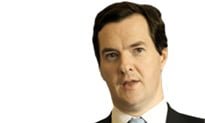Chancellor George Osborne has once again promised to protect the NHS from the worse of his austerity measures; while acknowledging that it will need to make efficiency savings.
In his autumn statement earlier today, the Chancellor said that he would extend the health service’s relative protection from government cuts to 2015-16; which means into the first year of the next spending review period.
A row broke out ahead of the statement about whether the Conservative-led government was maintaining the Tory manifesto pledge to increase NHS funding in ‘real terms’ for the length of the current Parliament.
The row focused on whether the increases that the government have found for NHS funding are keeping pace with higher than expected inflation.
The head of the UK statistics authority, Andrew Dilnot, suggested they were not, and that spending in 2011-12 would be lower than it was in 2010-11.
However, the Department of Health disputed this, saying the baseline should be set at the first year of the government’s current spending review round, in which real-terms NHS funding increased by 0.1%.
The row is particularly arcane because NHS inflation is invariably higher than general inflation.
The health service already knows that it will need to find in the region of £20 billion over four years to bridge the gap between essentially flat funding and these higher costs and the pressure caused by rising demand.
This is the so-called ‘Nicholson challenge’, named after NHS chief executive Sir David Nicholson, who outlined it as early as 2008.
Osborne acknowledged the challenge in passing in the autumn statement, saying: “We will continue to seek efficiency savings in the NHS and in our schools, but that money will be recycled to protect spending in these priority areas.”
The NHS is one of just three departments to be given any protection from the government’s austerity measures; with the others being schools and overseas development.
In his statement, Osborne outlined lower than expected growth of just 1.2% next year, and admitted that the government would miss its own debt reduction targets.
In response, he said that most departmental budgets would be cut by a further 1% next year and a further 2% the year after. This will remove another £980m and £2.4 billion from the public sector.
He also announced that he will slash almost £4 billion from the welfare bill by up-rating benefits by just 1% a year – or well below inflation – although, at the other end of the scale, he pulled more taxpayers into higher rate tax.
In a move that could be seen as a public health measure, he maintained the ‘beer duty escalator’ that increases duty on alcohol; although he scrapped the planned increase through the ‘fuel duty escalator’ that would have added 3p to a litre of petrol this spring.
Osborne also announced that the government would continue with national pay arrangements in the NHS; a move welcomed by unions, which are strongly opposed to local pay bargaining.
Unison said Agenda for Change continues to be “the fairest and most efficient way of determining pay for those who work so hard to deliver our NHS” and it was pleased the Chancellor had recognised this.
Dr Flynn, the chair of the BMA’s Consultants Committee, described the statement as “a very mixed picture”. He expressed “relief” that the NHS would receive a real-terms increase in funding next year “albeit a small one” and that “damaging” locally negotiated pay had been abandoned.
He also welcomed a commitment to review the private finance initiative, which has been blamed for the financial woes of a number of NHS trusts. On the other hand, he said changes to tax allowances and pensions would affect “thousands of doctors.”

